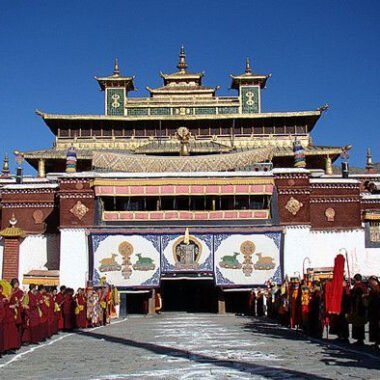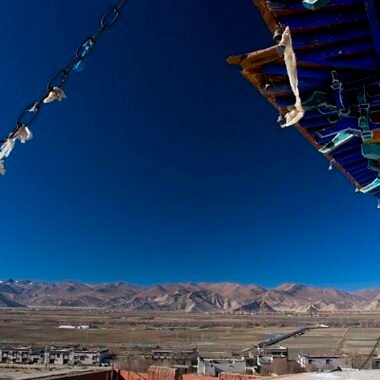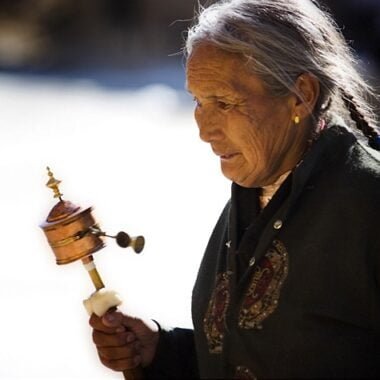Preparing for a Trek in Tibet: Essential Tips and Considerations
Trekking in Tibet is an unforgettable adventure, offering stunning landscapes, ancient monasteries, and a deep connection with nature. However, due to its…
Trekking in Tibet is an unforgettable adventure, offering stunning landscapes, ancient monasteries, and a deep connection with nature. However, due to its high-altitude terrain and unique cultural environment, trekking in Tibet requires special preparation and awareness. Here’s a guide to help you prepare for a safe and rewarding trekking experience in Tibet.
1. Physical Preparation
Trekking at high altitudes can be physically demanding, especially in Tibet, where many trekking routes reach altitudes above 4,000 meters (13,123 feet). The key to a successful trek is physical fitness. Start training well in advance by focusing on cardiovascular exercises such as hiking, running, or cycling. Additionally, work on building leg strength through activities like stair climbing or weight training.
It’s also essential to focus on stamina and endurance. Many treks in Tibet can take 6-8 hours a day, so long-distance hikes or multi-day walking trips in your local area will be great practice.
2. Acclimatization
Acclimatization is crucial to avoid altitude sickness, which can occur above 2,500 meters (8,200 feet). Most trekking routes in Tibet involve spending time at higher altitudes, so you must give your body time to adjust. The best way to acclimatize is to ascend slowly. Spend at least 2-3 days in Lhasa or another high-altitude area before heading to even higher altitudes.
If possible, take short, easy hikes around the area before starting the trek to allow your body to adjust further. Remember that it’s better to take extra days to acclimatize than to rush, as altitude sickness can be serious and even life-threatening.
3. Packing the Right Gear
Packing for a trek in Tibet requires careful planning. The weather can vary dramatically, with cold temperatures even in summer at higher elevations, so bringing proper gear is essential. Here’s a list of the basics:
- Clothing: Layering is key to staying comfortable in Tibet’s changing climate. Bring moisture-wicking base layers, a fleece or down jacket, waterproof outer layers, and a warm hat and gloves.
- Footwear: Sturdy, waterproof hiking boots with good ankle support are essential. Ensure they are broken in before the trek to avoid blisters.
- Sleeping Gear: If your trek involves camping, bring a high-quality sleeping bag rated for sub-zero temperatures. A comfortable sleeping mat will also help keep you insulated from the cold ground.
- Trekking Poles: These will help reduce strain on your knees and provide stability on uneven terrain.
- Sun Protection: High-altitude sun exposure can be intense. Bring sunglasses with UV protection, sunscreen, and lip balm with SPF.
- Water and Hydration System: Dehydration is common in high-altitude treks, so bring a durable water bottle or hydration pack, along with water purification tablets or a filter.
4. Dealing with Altitude Sickness
Altitude sickness can occur even in those who are otherwise fit and healthy. Symptoms may include headaches, dizziness, nausea, and shortness of breath. If you start to feel these symptoms, it’s important to stop ascending and rest. Descending to a lower altitude is the most effective way to relieve symptoms.
To reduce the risk of altitude sickness:
- Drink plenty of water.
- Avoid alcohol and smoking, which can worsen symptoms.
- Eat high-energy foods to keep your energy levels up.
- Take your time and don’t rush the ascent.
If symptoms worsen or don’t improve, seek medical attention immediately.
5. Understanding Tibetan Culture
Tibet is a deeply spiritual and culturally rich region. As a traveler, it’s essential to respect local customs and traditions. Before trekking, take the time to learn about Tibetan Buddhism and the significance of monasteries and holy sites along the way.
Be respectful of local customs, such as walking around monasteries in a clockwise direction and avoiding pointing your feet at religious objects. Always ask for permission before taking photos, especially in sacred places.
6. Health and Safety Considerations
Before embarking on your trek, consult with a doctor, especially if you have any pre-existing health conditions. It’s essential to get any necessary vaccinations and discuss your plans with a healthcare provider familiar with high-altitude travel.
Ensure you have travel insurance that covers emergency evacuation and high-altitude trekking. Medical facilities in remote regions of Tibet are limited, so having insurance can provide peace of mind in case of any health emergencies.
7. Hiring a Guide and Support Team
Many trekking routes in Tibet require permits and can be difficult to navigate. Hiring a local guide is not only advisable but also necessary for most trekking routes. A guide will help with navigation, ensure you stay on the right path, and share their knowledge about the region’s history, culture, and wildlife.
Additionally, having a support team of porters or yaks (on some routes) to carry your gear will make the trek easier and more enjoyable. Most trekking agencies in Tibet offer these services, so be sure to make arrangements in advance.
8. Respecting the Environment
Tibet’s natural beauty is its most prized asset. While trekking, make sure to respect the environment by avoiding littering and minimizing your impact on the landscape. Use eco-friendly toiletries, and if camping, make sure to leave no trace of your presence.
Trekking in Tibet is a unique and life-changing experience, but it requires thorough preparation. By focusing on physical fitness, acclimatization, packing the right gear, respecting the local culture, and prioritizing safety, you can ensure a successful and memorable trek in this beautiful and remote part of the world.
Popular Trekking Tours in Tibet
Among all the trekking tours in Tibet, the Ganden Monastery to Samye Monastery trek and the Mt. Kailash Kora are well-developed, moderate routes and are highly recommended.
-


-


-


-

 12-Day Mount Everest Trekking Tour$2,159.00
12-Day Mount Everest Trekking Tour$2,159.00











